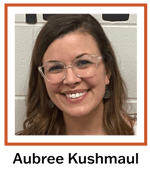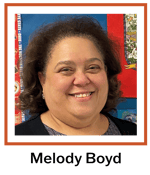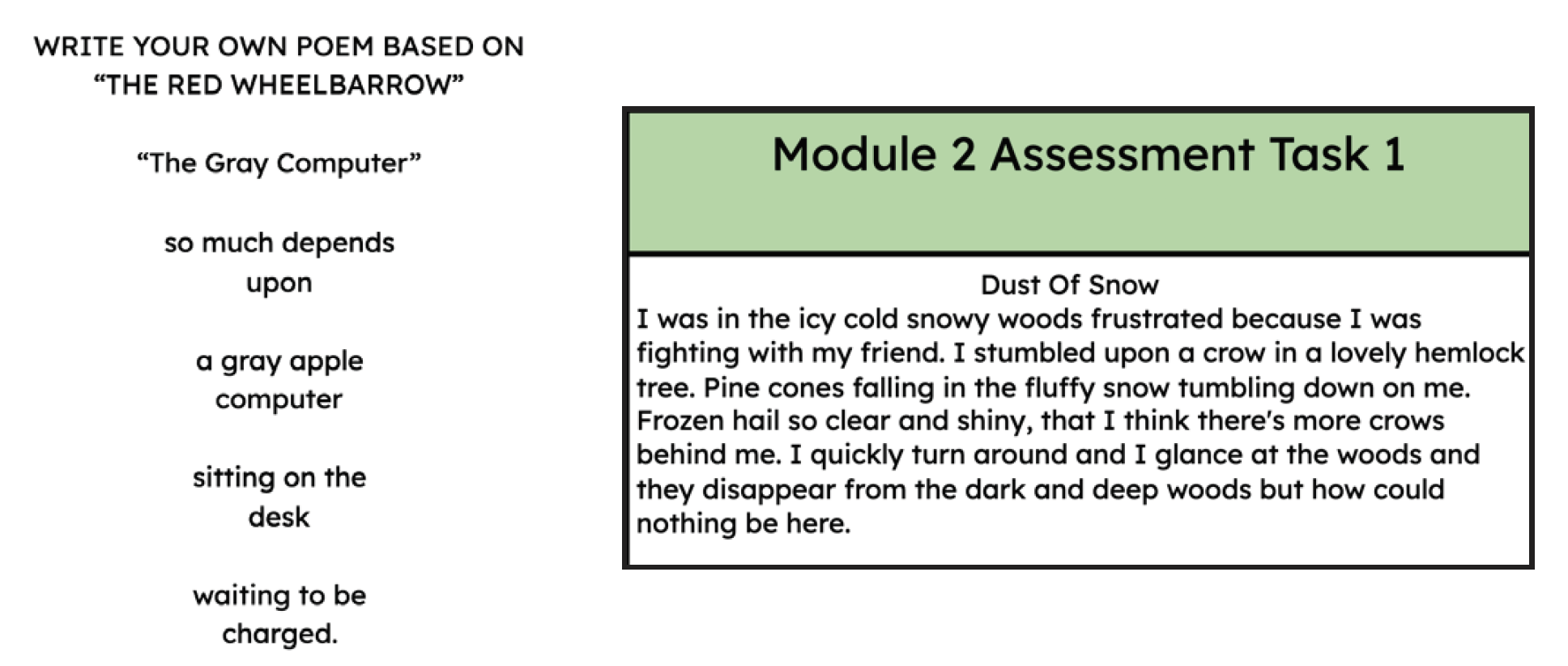Posted in: Aha! Blog > Wit & Wisdom Blog > Student Engagement Data Stories Fine Art > Wit & Wisdom® Opening Minds through Hands-On Learning Opportunities
For the K–6 students in Springfield, Ohio, the Wit & Wisdom® curriculum is not only opening doors and windows to knowledge, it is also creating connections to experts in a range of fields from all over the city and across the country.
 After learning about the heart (figuratively and literally) in Module 1: A Great Heart, Grade 4 students spent the morning in an online meeting with a local cardiologist. “He was thrilled,” says Aubree Kushmaul, an instructional coach at Kenwood Elementary School who helped make the connection. The cardiologist couldn’t believe the students’ level of curiosity and the depth of their questions. Their knowledge of medical vocabulary blew him away.
After learning about the heart (figuratively and literally) in Module 1: A Great Heart, Grade 4 students spent the morning in an online meeting with a local cardiologist. “He was thrilled,” says Aubree Kushmaul, an instructional coach at Kenwood Elementary School who helped make the connection. The cardiologist couldn’t believe the students’ level of curiosity and the depth of their questions. Their knowledge of medical vocabulary blew him away.
“They were asking about ventricles and atria,” Kushmaul says. “They were so comfortable with the terminology, it was miraculous.”
Then, after reading Hatchet, a novel about a teenager who has to survive in the wilderness after a plane crash, Grade 4 students spoke online with a survival, evasion, resistance, and escape expert from the US Air Force.
 The students enjoyed the conversation so much that they wrote thank you letters to the officer, says Corine Doll, Prekindergarten–Grade 6 coordinator of professional development and curriculum for the district. “I was blown away with the wonderful detail in the letters, no doubt thanks to their work with writing in Wit & Wisdom.”
The students enjoyed the conversation so much that they wrote thank you letters to the officer, says Corine Doll, Prekindergarten–Grade 6 coordinator of professional development and curriculum for the district. “I was blown away with the wonderful detail in the letters, no doubt thanks to their work with writing in Wit & Wisdom.”
Meanwhile, students in all grades are benefitting from Wit & Wisdom’s focus on art analysis as an entry to literacy in every lesson. That focus has sparked an expanded partnership with the Springfield Museum of Art.
“It has really lit up our students. Art teachers are especially doubling down this year,” Doll says.
DISTRICT PROFILE
10 elementary schools
4,500 elementary students
100% low-income students
19% students with disabilities
4% English learners
Adopted Wit & Wisdom for the 2021–2021 school year
As part of this partnership, the museum has curated additional artwork to help art and music teachers, as well as librarians, support the Notice and Wonder craft stage of Wit & Wisdom and provide another chance for students to use the vocabulary they’re learning from the curriculum’s core texts. Together, the school district and museum received a grant from the Smithsonian Institution, which will bring three scientists and several museum leaders to speak with Grade 6 students. The group includes Kari Bruwelheide, whose fieldwork was featured in Written in Bone, a Wit & Wisdom core text about Jamestown.
Educators are also benefitting from the expanded outreach. After teaching Blood on the River, a coming-of-age story set in 1607 Jamestown that is a core text in Module 3: Narrating the Unknown, Grade 6 teachers spoke to one of the archeologists from the Jamestown colony dig in Virginia.
“Wit & Wisdom is creating curiosity in our teachers too,” Doll says.
“Noticing and Wondering” in All Subjects
Students have “latched on” to the Notice and Wonder part of the curriculum’s approach, Doll says. “It provides a structured entry point. Differences [in previous learning] fade away when all students are looking at the same piece of art.”

 Discussing art has been especially beneficial for students working below grade level. “It’s a nonthreatening way for them to share what they know,” says Melody Boyd, a Grade 4 teacher at Kenwood Elementary School.
Discussing art has been especially beneficial for students working below grade level. “It’s a nonthreatening way for them to share what they know,” says Melody Boyd, a Grade 4 teacher at Kenwood Elementary School.
Boyd’s Grade 4 colleague Dee Copeland adds that Notice and Wonder and the Socratic Seminars have been especially valuable for her striving students. “They are so in tune with what’s going on verbally, they can share profound ideas,” she says.
The educators add that the curriculum’s structure (all the craft stages of Notice and Wonder, Organize, Reveal, etc.) has beneficially spilled over into science, social studies, and other classes; students and teachers alike welcome the familiar structures. The teachers and coaches also value the curriculum’s coherence, consistency, and depth.
 “The curriculum creates a deep base to attach learning to,” Doll says. “The teacher has the freedom to be an artist in her classroom. The resources are all there to let the magic happen.”
“The curriculum creates a deep base to attach learning to,” Doll says. “The teacher has the freedom to be an artist in her classroom. The resources are all there to let the magic happen.”
Doll credits Kristen Kettlehake, the district’s director of teaching and learning, for championing Wit & Wisdom. “She worked tirelessly to bring this curriculum to every student!”
Kayla Carson, a Grade 3 teacher at Fulton Elementary School, loves how the  lessons reignite students’ innate curiosity. “As toddlers, kids are asking questions all day long,” she says. “But when they get to school, we start to tell them what to think.” The Notice and Wonder structure invites students to explore, Carson says, adding that the curriculum has reignited her own passion for teaching after 13 years in the classroom. “I feel like a new teacher all over again.”
lessons reignite students’ innate curiosity. “As toddlers, kids are asking questions all day long,” she says. “But when they get to school, we start to tell them what to think.” The Notice and Wonder structure invites students to explore, Carson says, adding that the curriculum has reignited her own passion for teaching after 13 years in the classroom. “I feel like a new teacher all over again.”
Carson’s Fulton colleague Nicole Palmer, who teaches Grade 2, says the vocabulary has been especially beneficial for her students, most of whom  are English learners. She also appreciates how all the lessons are connected.
are English learners. She also appreciates how all the lessons are connected.
Engaged Students, Evocative Writing
Doll says teachers were skeptical about the new materials at first, fearing that Wit & Wisdom was a script. But when they started to see the quality of the students’ conversations and writing, perceptions changed.
 “It’s really difficult to get kids talking in a pandemic, with kids six feet apart or online,” says Michelle Lawrence, a Grade 4 teacher at Snyder Park Elementary School. “But they are so excited and so engaged.”
“It’s really difficult to get kids talking in a pandemic, with kids six feet apart or online,” says Michelle Lawrence, a Grade 4 teacher at Snyder Park Elementary School. “But they are so excited and so engaged.”
Lawrence and her colleagues have been especially impressed with students’ writing and ability to use sensory details to respond to texts such as “The Red Wheelbarrow” by William Carlos Williams, Love That Dog in Module 1: A Great Heart, and Robert Frost’s “Dust of Snow” in Module 2: Extreme Settings. (See student samples below.)

“The writing really helps them flex their brain muscles,” Lawrence says.
Carson says many of her students could only write a couple of words at the outset. “It was like pulling teeth. Now they’re writing five-sentence paragraphs with strong topic sentences and supporting details,” she says.
Advice Based on Experience
Based on their own experience over the first few modules, educators offered the following advice to others.
"The curriculum creates a deep base to attach learning to. The teacher has the freedom to be an artist in her classroom. The resources are all there to let the magic happen."
— Corine Doll, Prekindergarten–Grade 6 coordinator of professional development and curriculum
- Be gentle with yourself. The first year implementing the curriculum is challenging, especially during a pandemic. All of the teachers, for instance, are finding it takes them two 70-minute periods to complete a lesson.
- Be positive. Embrace the reality that this curriculum offers a new paradigm for teaching. Help explain why a knowledge-building curriculum is so beneficial and how it is based on the science of reading.
- And believe in your students. Even though some of the texts might seem too rigorous, built-in structures such as Notice and Wonder and the Socratic Seminars allow students to shine.
Doll calls Wit & Wisdom a “rigorous, hopeful curriculum.” Springfield’s first-year experience to date bears that out.
Submit the Form to Print

Jenny Taylor
Jenny has over a decade of experience in education policy and research. She has worked with states and districts on the development and implementation of college and career readiness policies, especially around the implementation of rigorous standards and high-quality instructional materials. She has extensive knowledge about K–12 standards, graduation requirements, assessments, and accountability systems nationwide. Additionally, she has conducted research for school districts to address pressing needs in those districts. Jenny received her B.A. in English and education from Bucknell University and her M.Ed. in education policy from the University of Pennsylvania Graduate School of Education.
Topics: Student Engagement Data Stories Fine Art











